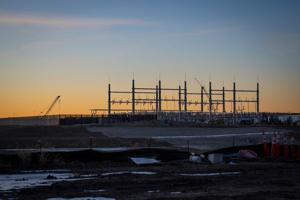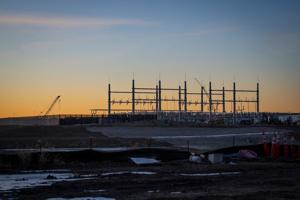Science
Data Centers Drive Economic Growth in Rural Communities

Discussions surrounding data centers often miss the broader implications of their presence in local economies. Contrary to the perception of these facilities as mere “big, concrete boxes” consuming excessive resources, they play a crucial role in fostering economic diversity and resilience. As cities and towns strive for growth, data centers can serve as foundational elements in building a prosperous future.
Understanding Data Centers and Their Impact
Data centers are integral to the technology that drives modern life. When individuals search for a recipe online or access files stored in the cloud, they rely on these facilities, which house vast networks of servers. Every digital transaction, from streaming videos to conducting financial transactions, depends on the robust infrastructure provided by data centers. This highlights their pivotal role in the contemporary economy.
Rural areas, in particular, stand to benefit significantly from the expansion of data centers. These facilities require substantial space and proximity to population centers to minimize latency—the delay in delivering information. Consequently, many projects are located just outside metropolitan areas, where land is more affordable yet still accessible to major markets. For rural counties that previously depended on agriculture or resource extraction, data centers can represent a transformative source of tax revenue and infrastructure investment.
While data centers may not generate as many direct jobs as traditional manufacturing plants, their economic impact extends far beyond their physical footprint. The services they enable support a vast network of jobs in various sectors, including software development, cybersecurity, logistics, and healthcare. Thus, each data center indirectly anchors numerous employment opportunities throughout the community.
Financial Benefits and Resource Management
The fiscal advantages of data centers can be substantial. When coupled with effective local budgeting and strategic planning, communities can leverage these investments to maintain low taxes and improve infrastructure. For instance, data centers in Loudoun County, Virginia, contribute an impressive $26 in tax revenue for every $1 required for public services, significantly bolstering funding for schools and other local initiatives.
A common misconception arises when comparing the resource consumption of data centers with that of residential homes. Such comparisons often misrepresent the facts, as industrial facilities inherently use more resources than individual households. In context, even projections from the Department of Energy suggesting data centers could triple their electricity use by 2028 indicate that their water consumption would still be relatively modest. It would amount to approximately the same volume of water used to irrigate 260 square miles of corn, representing about 1 percent of total corn irrigation in the United States.
Moreover, data center companies are increasingly committed to sustainability initiatives. Major technology firms actively invest in water infrastructure and renewable energy solutions. For example, in 2016, Microsoft financed a natural gas plant to enhance reliability while also signing contracts with local wind farms, ensuring a sustainable energy supply.
Ultimately, data centers are not just essential to the technology sector—they are vital to the entire economy. They form the backbone of the cloud economy, supporting various industries from healthcare to entertainment. For communities contemplating their economic futures, embracing data centers could represent a strategic decision that shapes the infrastructure needed for the next generation of growth.
Local leaders now face a critical decision: whether to capitalize on the opportunities presented by data centers and ensure that their communities reap the associated benefits. The potential for economic transformation is significant, and the choices made today will influence the landscape of local economies for years to come.
Josh T. Smith serves as the Energy Policy Lead for the Abundance Institute, a nonprofit based in Utah. He coauthored a guide to data centers released in July 2023. Follow him on X/Twitter: @smithtjosh.
-

 Technology5 months ago
Technology5 months agoDiscover the Top 10 Calorie Counting Apps of 2025
-

 Health2 months ago
Health2 months agoBella Hadid Shares Health Update After Treatment for Lyme Disease
-

 Health3 months ago
Health3 months agoErin Bates Shares Recovery Update Following Sepsis Complications
-

 Technology4 months ago
Technology4 months agoDiscover How to Reverse Image Search Using ChatGPT Effortlessly
-

 Technology1 month ago
Technology1 month agoDiscover 2025’s Top GPUs for Exceptional 4K Gaming Performance
-

 Technology2 months ago
Technology2 months agoElectric Moto Influencer Surronster Arrested in Tijuana
-

 Technology5 months ago
Technology5 months agoMeta Initiates $60B AI Data Center Expansion, Starting in Ohio
-

 Technology5 months ago
Technology5 months agoRecovering a Suspended TikTok Account: A Step-by-Step Guide
-

 Health4 months ago
Health4 months agoTested: Rab Firewall Mountain Jacket Survives Harsh Conditions
-

 Lifestyle5 months ago
Lifestyle5 months agoBelton Family Reunites After Daughter Survives Hill Country Floods
-

 Technology4 months ago
Technology4 months agoHarmonic Launches AI Chatbot App to Transform Mathematical Reasoning
-

 Technology3 months ago
Technology3 months agoUncovering the Top Five Most Challenging Motorcycles to Ride















